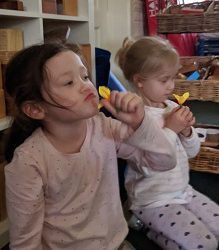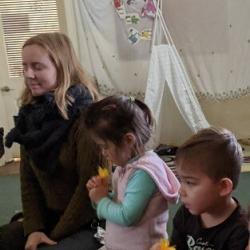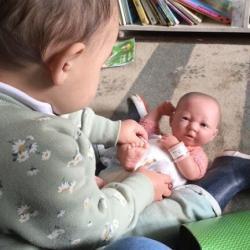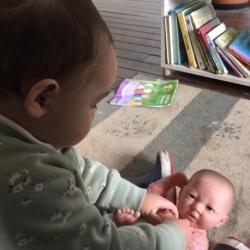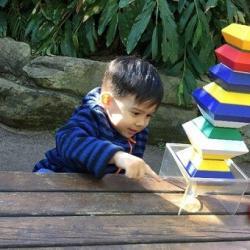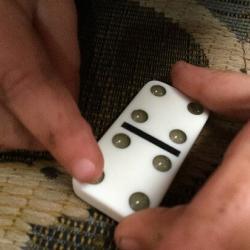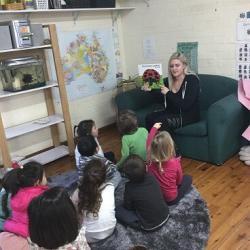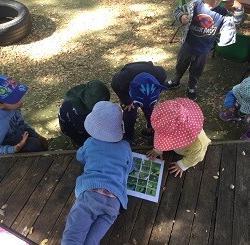Johnson House
Every day at check in group in Johnson House the children are given a choice of up to three meditations to do. Recently a new meditation called ‘Flower Breath’ has been introduced. This meditation involves the children closing their eyes and imagining a beautiful flower in front of them. They are asked to imagine the petals, leaves and stem. They are then encouraged to bring the flower up to their nose, and to take a long breaths in through their nose and to let it all the way out through their mouth. Each meditation is not much longer than a minute, and the children have been able to focus their attention for this time. They have learned different ways to regulate their emotions through taking deep breaths.
Some of the children have been able to implement these breathing exercises independently in play situations with their peers, while others have been able to do it when an educator supports them by saying, “Remember when we do candle/flower breath (or any other meditation), we breathe in deeply through our nose and breathe out through our mouth.”
Through the check in group and meditations educators aim to continue building on the children’s emotional intelligence and resilience. This is an important aspect of school readiness as the children learn to navigate their own emotions and adopt various strategies to regulate how they are feeling.
Murray House
Infants
Pretend play is currently evolving in Murray House infants. Many children value this play as they show great interest in dramatising some of their familiar experiences they have in their families and the community.
Educators have been working collaboratively to extend the children’s interests in this play by creating a new drama corner with real-life resources. The children love playing in this space, and it has become the favourite play corner. They have been engaging in both solitary and parallel play as they explore the new resources in this space. Educators have also noticed some beautiful interactions happening between children, in which they have used some words and actions to communicate with each other, with their play developing further into associative play (in which children play the same game, but are not working together). Educators have heard children inviting other children to play by saying “Come!” to them, and then nurturing the dolls by patting them and pretending to feed them together. It was lovely for educators to see the children dramatising their real-world experiences and demonstrating engagement in solitary, parallel and associative stages of play.
Toddlers
This week Murray House toddler’s room had some children returning after a long break, and they were supported to transition back into the centre setting smoothly. To help the children to settle in smoothly, educators taught the children to name and identify emotions through visual cards and books, shared stories and experiences with children in small groups, and ensured that their ‘emotional cups’ were regularly topped up throughout the day. As a result the children demonstrated strong connections with their educators and peers as they confidently explored their social and physical learning environments.
This week many learning experiences were intentionally planned and offered to the children by educators to foster the development of the children’s concentration, language and counting skills. Activities included number and shape puzzles, threading, cutting, and small language groups. These learning experiences saw the children demonstrate their developing persistence, attention spans and commitment. These are great dispositions for children to have for their subsequent learning.
Additionally, many of the children are also learning to identify secondary colours. To extend their colour recognition various painting experiences with a range of resources were offered throughout the week. Acrylic paint, water-based paint, cotton buds, thick brushes, thin brushes, paper, and natural resources were available for painting activities. These experiences allowed the children to explore, test theories, and build their knowledge about how secondary colours are created, as well as enabling them to use their creativity to express themselves and make meaning.
Robinson House
The children in Robinson House have been showing interest in the ladybugs that live near the big tree in the playground. The children have found lots of lady bugs—there seems to be a plague of them at the moment! Educators and children have been looking at the different colours of the lady bugs—orange, yellow and black spots, and they have been observing how the ladybugs move by crawling and flying.
While they were observing the ladybugs the children and educators discovered another bug that they hadn’t seen before. Educator Katie did some research and realised that this bug was actually also a ladybug, but it was at the larva stage the ladybug life cycle. Katie took the opportunity to explore the full life cycle of the ladybug with the children, from egg to larva to pupa to moult and finally becoming an adult ladybug.
The children have been very curious about ladybugs, and they enjoy going on ladybug bug hunts. This interest has become a project for the children, and educators have set up a ‘ladybug learning space’ for the children to continue to learn more. They have made a home for the ladybugs, and they have been reading story books and drawing the different stages of the ladybug life cycle, as well as doing ladybug-related puzzles and craft experiences.
